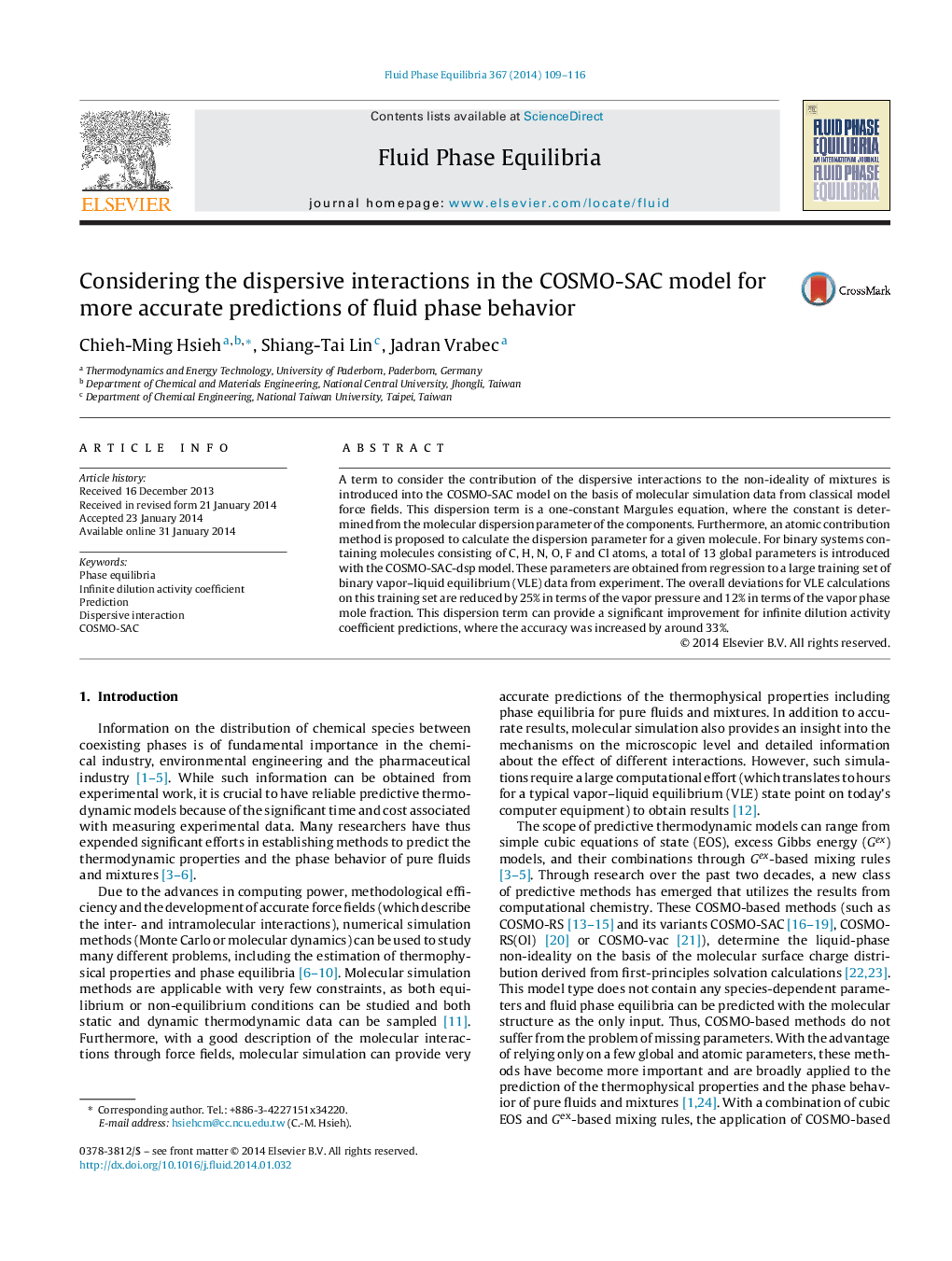| کد مقاله | کد نشریه | سال انتشار | مقاله انگلیسی | نسخه تمام متن |
|---|---|---|---|---|
| 200958 | 460526 | 2014 | 8 صفحه PDF | دانلود رایگان |

• A dispersion contribution to the activity coefficient calculation is introduced into the COSMO-SAC model.
• This contribution is based on molecular simulation data for classical model force fields.
• All parameters in the proposed term are adjustment to VLE data and the overall deviations are reduced by 25% in terms of the vapor pressure and 12% in terms of the vapor phase mole fraction.
• The accuracy of infinite dilution activity coefficient predictions is improved significantly; the overall deviation is reduced by about 33%.
A term to consider the contribution of the dispersive interactions to the non-ideality of mixtures is introduced into the COSMO-SAC model on the basis of molecular simulation data from classical model force fields. This dispersion term is a one-constant Margules equation, where the constant is determined from the molecular dispersion parameter of the components. Furthermore, an atomic contribution method is proposed to calculate the dispersion parameter for a given molecule. For binary systems containing molecules consisting of C, H, N, O, F and Cl atoms, a total of 13 global parameters is introduced with the COSMO-SAC-dsp model. These parameters are obtained from regression to a large training set of binary vapor–liquid equilibrium (VLE) data from experiment. The overall deviations for VLE calculations on this training set are reduced by 25% in terms of the vapor pressure and 12% in terms of the vapor phase mole fraction. This dispersion term can provide a significant improvement for infinite dilution activity coefficient predictions, where the accuracy was increased by around 33%.
Journal: Fluid Phase Equilibria - Volume 367, 15 April 2014, Pages 109–116